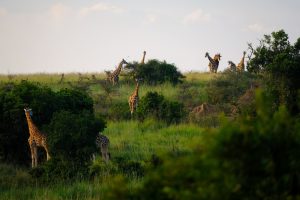Vintage photos of British elites gone wild
Written by Tom Seymour, CNNIn the early 1980s, at secretive night-time events around Oxford University and in grand country homes in Kent, Surrey and Buckinghamshire, carefully selected guests would descend in gowns and tuxedos to drink, eat, flirt, dance, kiss, date, fight, show-off, gossip and then drink some more. Before the age of Instagram, they were there to behave badly. David Cameron, the former UK prime minister, was a frequent attendee of such hunt balls, debutante dances and society weddings. So was the actor Hugh Grant, on the cusp of movie stardom. Nigella Lawson, in between waiting tables in a restaurant near Oxford University, would also turn up. There they would rub shoulders with a litany of future politicians, business leaders, aristocrats, academics and other doyens of the ruling classes. Benita Douglas-Robertson above Matt Gomez at the Blizzard Ball, London, 1981 Credit: Courtesy Dafydd JonesLurking in the background, camera in hand, was photographer Dafydd Jones. A selection of Jones images of the time has been released as “The Last Hurrah,” a photobook by British publisher Stanley/Barker.”At that time, the English upper class was top dog,” Jones said in a phone interview. “They had the confidence to have these big, easy, relaxed parties that would quite often get quite wild. They were very carefree.” Jones grew up in suburban Oxford. (“I was a ‘townie'” he said.) Throughout his youth, he recalls the city’s students “walking round looking like tramps.” Then, in a trend that coincided with the election of Margaret Thatcher in 1979, Jones noticed Oxford’s students “abruptly try and differentiate themselves from the rest of the city.” Clive Cooke at a party organised by Oliver Baxter, London, 1981 Credit: Courtesy Dafydd JonesAcross the UK, the rich and powerful were resurgent. “Thatcher gained power and promptly cut taxes,” Jones said. “Suddenly, the well-off had more money to spend, and they spent it on parties.” He would see students walking the streets in black-tie and flowing gowns. “They weren’t trying to hide their wealth,” he says. “The rich were celebrating.” Although he wasn’t a student at Oxford, Jones found ways to blend in among the colleges’ grand halls. He would find out when and where these secret parties were happening, and blag his way in, his camera safely hidden in his satchel. Burning boat, Oriel College, Oxford, 1984 Credit: Courtesy Dafydd JonesOne series of images, taken in the autumn of 1980 at a meeting of the Bloody Assizes Dining Society, an exclusive all-male drinking club, were submitted to a Sunday Times photography competition. Although he didn’t win, he came to the attention of Tina Brown, the future Vanity Fair editor, who was then at the helm of society magazine Tatler. Brown called Jones, congratulated him on his shots of the Oxford student scene and offered him a job as Tatler’s official party photographer. He would start immediately, on the proviso he moved to London straight away. Sliding down the marquee during the New College May Ball, Oxford, 1983. Credit: Courtesy Dafydd JonesAt first, Jones didn’t take her seriously. “The shots I submitted (to The Times) were fairly obvious send-ups of the kind of shots Tatler would routinely publish,” he said. But Brown loved them. Jones was sent to every high-end party Tatler could get access to, and Brown would routinely use the images he returned with to animate Tatler’s pages. Debutante pushed into a lily pond during the Martin Betts Dance, Ascot, 1982 Credit: Courtesy Dafydd JonesIn 1983, during a stint as a columnist for the Daily Mail, Brown used Jones work, including an image of a woman in a flowing gown dancing on a grand dining table, for a piece titled “Snob Wars.””There’s a civil war going in Britain… except it isn’t very civil,” Brown wrote. “Everywhere I look, social groups are lining up and shaking their fists at each other. We have kissed off the guilt of the ‘caring, sharing’ seventies and got dressed to kill for the Up Yours Eighties.” “Tina would talk about this new generation of what she called ‘sod you’ Tories,” Jones said. Susie Kydd, c. 1983 approx Credit: Courtesy Dafydd JonesHe remembers a grand ball in Kent. Six hundred guests were invited. On arrival, they were greeted by boy scouts holding burning torches, lining each side of the long driveway to the stately home. “The ball took place on the same night as the Brixton riots,” Jones says. “I stood outside and took pictures of them leaving the event. But, just a few score miles away, Brixton was on fire. It felt very much like a different world.” Trinity Hall, Cambridge, 1983 Credit: Courtesy Dafydd JonesAmong his contemporaries, Jones has taken some heat for a perceived lack of critical distance from his subjects. But, as he points out, the upper classes of Britain are not now the same. “They’ve been replaced by wealth from around the world,” he said. “The landed gentry isn’t as significant anymore. The Chelsea set have been squeezed out of Chelsea. They’re more self-conscious. They’ve lost that sense of carefree confidence.” He points to the title he chose for his series of the former powerful at play: “I called it ‘The Last Hurrah’,” he said. “It felt appropriate.””The Last Hurrah” by Dafydd Jones, published by Stanley/Barker, is out now. Top image: Halloween Ball, 1987







